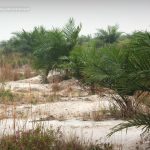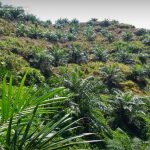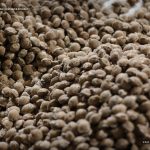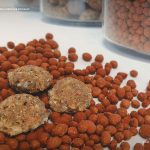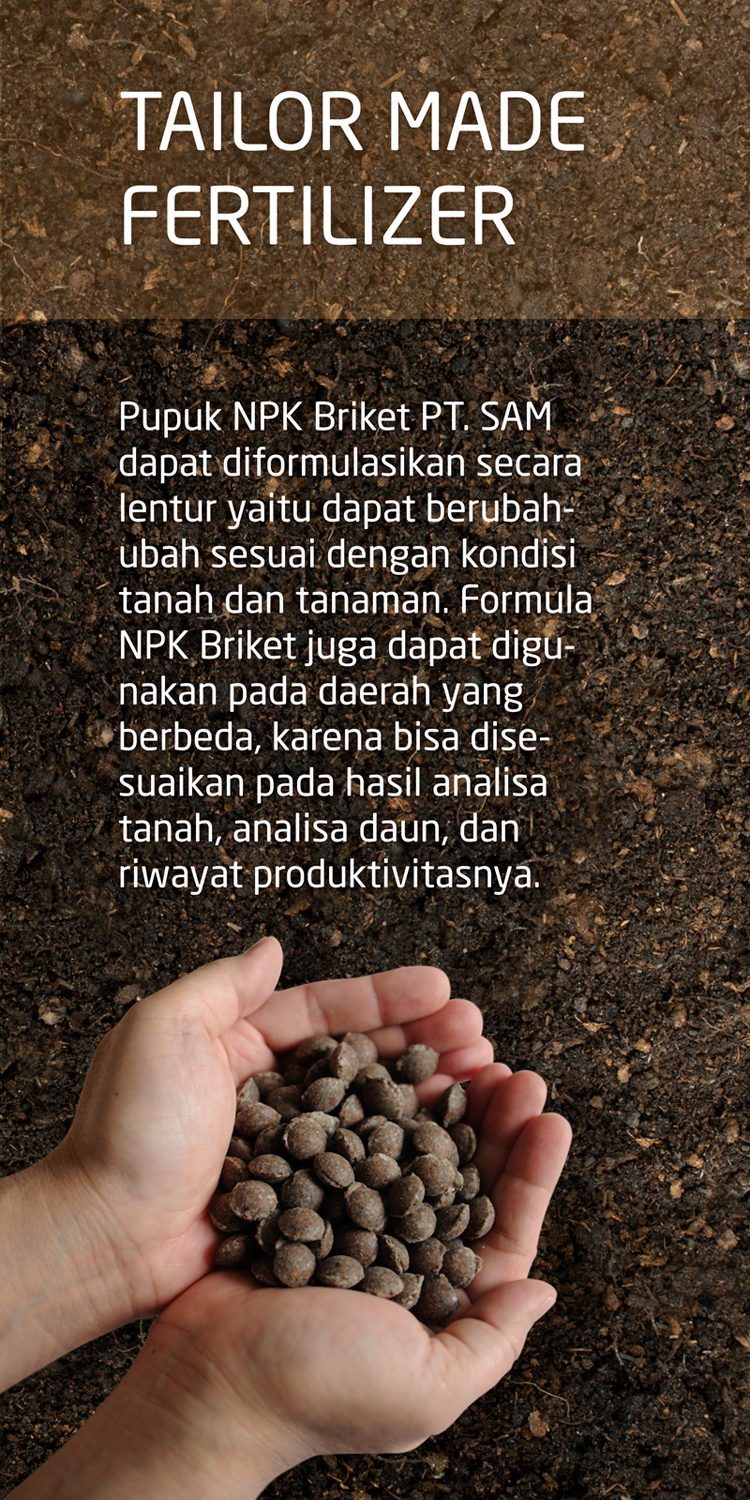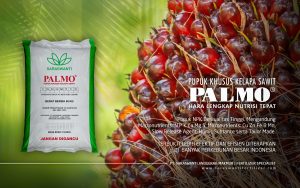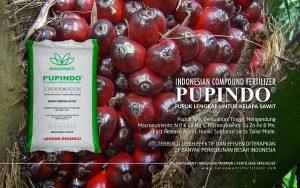Abstract
The area of peatland in Indonesia is about 18.3 million hectares where about 1.7 million hectares are used for palm cultivation. The huge potential of peatland pushed the expansion of land utilization in several provinces that have vast peatlands such as in Riau, West Kalimantan, and Central Kalimantan. This utilization must be balanced with sustainable management so it won’t lead to bigger disadvantages in the future. There are so many problems for sustainable peatland management especially for palm cultivation, one of them is soil fertility. The soil fertility problem in peatlands includes the crumb characteristics of the material, the intensive nutrient washing, the soil acidity, and the lack of the original soil fertility. The necessary management to do is wiser water management, suitable peatland selection, soil acidity management, and soil fertility management. Several technologies developed by Saraswanti for suitable management of peatlands such as calibrating engineering composition and customized nutrient dose for each soil condition, form engineering by modifying surface area and density of fertilizer, and engineering nutrient release time. The combination of those three elements proved the effectiveness of facing the problems in the peatland.
Keyword: Peat, Fertilization
Introduction
The area of peatland in Indonesia is about 18.3 million hectares that spread into several areas in Indonesia. From those areas, about 1.7 million hectares are used for palm cultivation, where 1.4 million hectares are placed in Sumatra and the rest are in Kalimantan (Tropenbos Indonesia, 2012). Most of the peatlands that are being cultivated for palm are managed by companies, only about 700 thousand hectares are people’s oil palm land. The huge potential of peatland pushed the expansion of land utilization in several provinces that have vast peatlands such as in Riau, West Kalimantan, and Central Kalimantan.
The peatland expansion, besides because of the land availability, is also supported by the abundant water supply in that land. This water supply is needed for palm cultivation to help the plant grow better. To make the plant grow better, there are management actions to do especially about drainage problems and the nutrients. With drainage management, peatland can be managed so the water needs to be suitable for the cultivation activity. The fertilization usage that suits the peat character guarantees the nutrient availability for the plant.
Saraswanti through Fertilizer Division developed technology for nutrient supply that suits palm cultivation in peatland. The technology is in the form of formulation, form, and solubility speed engineering. The technology is packaged into one of Saraswanti’s fertilizer division products named “PALMO”. PALMO product already used by many palm stakeholders in Indonesia and proved to give solution related to the nutrient availability especially for palm
Chapter 1 Fertilizer Problems in Peatland
- Material Characteristics
Peat has a sponge-like material with the colloid characteristic that can hold a certain amount of water (Driessen and Rohimah, 1976). To suit the cultivation area, the peatland drainage first sets the height of the water surface. Over-drainage can make the water absorbed and lost, causing a bad change to the colloidal structures that results in the peat losing most of its water resistance. dry peat is hydrophobic and difficult to be wetted again, making it highly vulnerable to fire. The water loss and the change of colloid structure caused bad shrinking to the peat. The peat becomes granular with a bad physique condition that does not support agriculture productivity and high sensitivity to erosion. This weak structure caused the binding power of the root to be very low, causing potential collapse for several kinds of annual plant.
Most nutrients are the result of weathering of organic materials. The unavailability of mineral materials as nutrient contributors cause the original peat fertility to be very low. Rachim (1995) said that besides poor primary resources, environmental conditions in the peat make many of these elements unavailable.
- Nutrient Leaching
Nutrient leaching on topogenous peatlands becomes very intensive, there are 2 factors that are very influential, that is, the impervious tread and drainage pattern. impervious tread contains negative charge that will very influence cation-exchange capacity. impervious tread and cation-exchange associated with hydrophilic colloidal peat named humic acid and hemicellulose (Volarovich and Churaev 1968 cit Rieley et al., 1996). Organic fraction of tropical peat contains such an amount of hemicellulose, cellulose, lignin, humic materials, and small amounts of protein, waxes, tannins and resin. Peat cation-exchange capacity is highly determined by the relatively stable lignin fraction and humic materials, including fulvic acid and humic acid, that formed a stable complex with metal ions (Rieley et al., 1996). For fibric peat, a lignin fraction still forms in the carbon chain with a very low charge. In this condition, there isn’t any agent that can keep the nutrient in a complex exchange so it will be easier to leach.
Water surface management in peatland to make it suitable for cultivation needs intensive drainage management. As a result, there are so many elements that are soluble in the water that also move following the drainage pattern. Indirectly, there will be nutrient leaching either carried in or out. The combination of intensive nutrient leaching and low original soil fertility caused the peatland to be categorized into marginal land
- Acidity
The acidity in peatland if measured with a pH scale will show an acid reaction. The peatland acidity is related to the presence of organic components, H and Al can be exchanged, iron sulfate and sulfur components are both oxidized. Unlike mineral soil, the presence of organic acids will determine the acidity and the presence of exchanged Al is less crucial. Amount of organic matter acidity is vast. It is aligned with a statement stated by Sri Nuryani (2007) that the development of agriculture in peatland faces several problems such as the high acidity of organic acids.
- Original Fertility
The original soil fertility obtained from the weathering of materials in that location, in the peatland the weathering is dominated by organic materials crop residue that grows upside. because that material isn’t a rich source of mineral nutrients, then there are many nutrient deficiencies in peatlands. The nutrient deficiencies mostly occur in the deep peat than in the shallow peat (Anderson, 1983 cit. Rieley et al., 1996). Most of the peat in tropical areas contains less than 5% mineral materials. Peat in a virgin condition commonly has low P materials. Most of it is in the organic form and has to be mineralized first before being available for the plant.
Tropical peat electrical conductivity commonly less than 100 µS cm-1, except beach peat that can reach 470 µS cm-1. This condition is influential to the availability level of microelements. Peatlands also lack microelements because they are tied by organic materials (Rachim, 1995).
Chapter 2 Fertility Management in Peatland
2.1. Water Management
Water as the solvent medium from several materials especially for nutrient movement plays an important role in the availability concept for plants. indirectly, water movement will influence nutrient movement in the soil. Keeping soil in a sufficient condition will make the environment well grow in its availability of its needs including the nutrient.
Peatland encounters a wetting and drying process periodically. This condition affects the contribution of several nutrients released or the transformation to change the nutrients availability. drying the soil stimulates Nitrogen mineralization (3 times higher) and decreases its denitrification (5 times lower) than continuous wet soil. In wet conditions, denitrification increases to 20 mg N m-2 d-1, higher than denitrification compared to the common condition. Soil drying also stimulates N and K release that is available, but P release isn’t affected. Otherwise, P that can be extracted increases in soil wetting according to Mohr etc (1972).
Phosphor availability in wet conditions mostly depends on chemical equilibrium in soil (Suharta, 2007). Especially around pH 4-6, wetting decreases the phosphor availability and form Fe-P. Previous studies show that microbial immobilization can control P availability for the plant. (Driessen and Rohimah, 1976). Maintaining an oxidized state can help P supply in a complex exchange.
Potassium release in the soil is controlled by physical adsorption in clay soil particles (Driessen and Rohimah, 1976). Because the K adsorption increases alongside the soil drainage, the K availability for the plant tends to decrease after drainage. In the peat, physical adsorption doesn’t occur because of the low crystalline lattice in the clay that retrieved K. Wetting again the area that previously dried in the peat has been practiced in wetland restoration (Pfadenhauer and Grootjans, 1999). The objective of re-wetting is to decrease soil aeration and decrease N mineralization. Sulfate addition in Venterink etc (2002) experiment tends to decrease N denitrification so it can prevent the loss caused by leaching. This application is done together with the wetting in the dryland. drainage management is preferably done according to the need of the cultivation that is a complex root change area. Good drainage, especially in the complex root change, helps peatland sustainability. Good management decreases nutrient leaching, decreases subsidence level, prevents occurrence of fire and preserves the water source below.
2.2. Peat-Type
Peat that has been weathering has a more dominant lignin fraction. lignin fraction is relatively stable in the soil and forms a stable complex with the metal ions (Rieley et al., 1996). This condition helps the impervious tread establishment so the value of cation exchange capacity increases. With that increase, the nutrient availability is getting higher. Because the condition has been stable, subsidence levels that occur are also relatively low. An intensive subsidence will be very detrimental because it can cause the plant to collapse, especially for annual plants.
The peat area ecologically works as a water supply that will be very useful when drought occurs. excessive drainage action during land opening causes the ecology function to be broken. Peat dome area is a vulnerable area to be broken if excessive drainage action occurs. cultivation business should avoid peat dome area to avoid ecological damage. Types of peat fibers have a high vulnerable level in terms of management. Besides posing many challenges, it’s also causing more severe environmental damage.
2.3. Acidity Management
Peatland is acidic, so it needs several acts to increase pH level so it can fix plant rooting media. Bad effect of the poisonous organic acids can be decreased with the water management technology and adding some materials that contain polyvalent cations such as Fe, Al, Cu, and Zn. Nutrient deficiencies to give an optimal result can be done by amelioration and fertilization. But it’s important to note that amelioration to fix peat soil fertility also spur emissions, because amelioration can decrease the ratio of C/N and can spur peat decomposition. So, the utilization of the peatland has to match with the rational consideration between economic benefits gained and the environmental disadvantages that will be suffered (Widyawati, 2011).
Unlike the mineral soil, peat soil pH only has to be increased until pH 5 because peat doesn’t have poisonous Al potential. pH increase not more than 5 can slow down peat decomposition. The bad effect of the poisonous organic acids can be decreased by adding ameliorant materials that contain many polyvalent cations such as dolomite, steel slag, laterite mineral soil or river mud (Salampak, 1999; Sabiham et al, 1997). Adding mineral soil with high-iron content can increase the growth and production of the plant (Mario, 2002; Salampak, 1999; Swastika, 2004; Subiksa et al., 1997).
Maintaining the water surfaces to make the pyrite layer unoxidized will be very effective in suppressing the occurrence of a drastic increase in pH. The oxidized pyrite layer can decrease soil pH until it is very acidic. In this condition, commonly plants can’t survive.
2.4. Fertility Management
The very low nutrient content of peat needs to be increased with the N, P, K, Ca, and Mg fertilization. The low holding power to the cation in the peatland needs to be anticipated with the use of slow-release fertilizers. Microelements are unavailable for the plant so microelement fertilization especially those that contain Zinc Sulfate is important. The microelements addition in the fertilization can help increase the nutrient availability for the plant.
The higher the natural phosphate content and the amount of Fe in the water soil, the higher its contribution to suppressing the carbon loss, the average number of carbon loss in peat soil annually can be suppressed by: 64% (1,7 Mg C ha-1.year-1) in 5 cm flooded condition, followed by the condition 2 times field capacity by 58% (1,3 Mg C ha-1.year-1) and the condition of the field capacity by 41% (1,0 Mg C ha-1 year-1). The additional polyvalent cation such as Fe and Ai will create impervious tread for phosphate ions so it can decrease the loss of P nutrient because of leaching (Rachim, 1995). The increase of P material in plants becomes higher if application of high Fe natural phosphate followed by application of Ameliorant Fe3+. To suppress the carbon loss and maintain the peat soil stability it is recommended to use high Fe content material as amelioran and high Fe content material natural phosphate in flooded conditions (Nelvia, 2009).
The fertilization type needed is the one that contains N, P, K, Ca, and Mg with microelement customized with all the surrounding conditions. Although KPK peat is high, the holding power is low to exchangeable cations so that the fertilization should be done several times with low dose so there aren’t many nutrients leached out. The application of fertilizer with slow availability seems better than other NPK fertilizer in general, because it will be more efficient and can increase soil pH (Subiksa et al., 1991).
Chapter 3 Saraswanti Fertilization Technology
3.1. Nutrient Formulation
Nutrient formulation technology applied to every Saraswanti’s products directed towards nutrient types, material, and additional additive element or compound that influence the quality fixation of the plant, fixing soil fertility value and encouraging accelerated nutrient availability. Type of nutrient needed especially contains N, P, K, Ca, Mg and S, where every nutrient is customized with the plant’s needs.
The need of fertilizer composition formulation determined based on the measurable and accountable research results through soil and leaf analysis. Nowadays, the addition of nutrient unnoticed, but actually has function that can give real contribution to the plant quality fixation also being the part to strengthen fertilize formulation quality, such as the addition of micronutrients that can increase the soil fertility value, such as adding completely humic substance contain of Cu, Zn, Fe, B, and Si. To increase the quality of the fertilizer, compositional engineering is often done by enriching the composition through adding some material that can increase the soil fertility value, such as adding humic substance.
The application of nutrient formulation technology is effective to solve problems in peatland conditions. The compositional formulation concept according to the plant need and the availability of the nutrient will suppress the influence of excessive nutrients contained in the fertilizer that are easily lost due to run off or leaching. Therefore, it is very logical that fertilizer nutrient formulation will maximize the effectiveness of the fertilizer usage.
3.2. Form Formulation
Formulation of solid fertilizer forms done by Saraswanti directed to the form, particle size and the grain surface massiveness. The fertilizer physical characteristic formulation in the fertilizer form directed to the bigger fertilizer particle size. The amount of grain surface area has a chance of complete integration of all elements that are more guaranteed and influence the dissolution of fertilizers relatively slower than smaller diameter fertilizers. The massive fertilizer characteristic is related to micro pore density on the surface of fertilizer, engineered through a compressing process to create greater specific gravity of grains (1,33-2,50 g/cm3) and help the material dissolution hydrolysis crushing process become slower. Sizing and massiveness of the fertilizer used to be one of the controllers of slow-release fertilizer characteristics.
Fertilizer formulation in the bigger size and fertilizer massiveness which plays a role in maintaining the nutrient release under controlled conditions, very suitable to be applied for peatland. Bigger size fertilizer can control the nutrient availability more effectively by decreasing the nutrient loss from fertilizer caused by leaching, up and down water dynamic vertically, and flooded land also water runoff in a certain period.
3.3. Fertilizer Dissolution Speed Formulation
Fertilizer dissolution speed is often a key objective in fertilizer physical characteristic formulation engineering. This characteristic became one of the Saraswanti focuses in relation to fertilizer capability to serve nutrients for plants. Formulation dissolution engineering fertilization speed that Saraswanti has implemented is done through a chemical, physical, and combination of the two mechanisms .
Nutrient limiting factors in peatland used to be related to the excessive water condition in the soil surface layer. The nutrient loss in the soil surface layer is often related to the nutrient solubility that is carried by the excessive water movement. By managing fertilizer dissolution speed, probably the nutrient loss in the soil surface can be suppressed as small as possible in the hope that it will provide fertilizer a chance to stay longer in the soil and give it a chance to increase the plant absorption efficiency.
Fertilizer provides nutrients for plants inside the soil by fertilizer material contact process with the soil moisture origin water. Chemical hydrolysis reaction in the fertilization material surface will cause ionization in each element contained in the material. This chemical reaction caused fertilizer material dissolution to become nutrient in the form of its ion fraction. Applicable fertilizer in the intensive leaching land often becomes ineffective, because more fertilizer is lost in the soil surface than the fertilizer nutrient absorbed by the plant.
Chapter 4 Saraswanti Fertilizer Application Result in Peatland
Research results in the peatland in Kandeng Farm, Kotabesi Sub-District, Kotawaringin District shows that the increases of NPK Palmo compound fertilizer usage productivity by 39,6% and 37,3% than single fertilizer. Research in Klangsam, Baning Sub-District, Langsam District, NPK compound fertilizer productivity increases by 34,4% than single fertilizer. The same trend also showed in the research in Tudungsaji Farm, Baning Sub-District, Langsam District, the increase occurred by 27,8% compared to single fertilizer.
Chart 1. Single and compound fertilizer efficiency research in several peatland plantation
| Farm Location |
Single Fertilizer (ton/ha/year) |
NPK Palmo (ton/ha/year) |
Increase (%) |
| Kanden Farm, Kotabesi Sub-District, East Kotawaringin District |
9.6 |
13.4 |
39.6 |
| Kanden Farm, Kotabesi Sub-District, East Kotawaringin District |
7.5 |
10.3 |
37.3 |
| Klangsam Farm, Baning Sub-District, Langsam District |
6.4 |
8.6 |
34.4 |
| Tudungsaji Farm, Baning Sub-District, Langsam District |
7.2 |
9.2 |
27.8 |
| Average |
7.7 |
10.4 |
34.8 |
Data source: Collection data of PT Saraswanti Anugerah Makmur team
Generally, the increase of compound fertilizer usage productivity than single fertilizer in peatland by 34,8%. NPK Palmo is a compound fertilizer in the form of briquette with slow release characteristics. This kind of fertilizer is suitable for peatland where it often loses its nutrients caused by leaching. Even though the KPK of peat is high, its holding power to exchangeable cation is low so the fertilization has to be done repeatedly or by using slow-release fertilizer type. The usage of the fertilizer that has slow availability is better than NPK fertilizer commonly, because it will be more efficient and increase soil pH (Radjagukguk, 1983).
Research results in TBM palm, shows that the usage of compound fertilizer commonly increases plant growth whether seen from the leaf area, number of leaflets, average leaflet length, average leaflet area, number of midrib and midrib length. Research results of the NPK Palmo compound fertilizer usage effect compared to single fertilizer in Klangsam plantation, Sintang Sub-District, Sintang District, West Kalimantan shown in this chart.
Chart 2. Single fertilizer and compound fertilizer efficiency research onTBM palm peatland in Klangsam Farm, Sintang Sub-District, Sintang District, West Kalimantan.
|
Treatment |
Leaf Area (m2) |
Number of Leaflets (piece) |
Leaflets Length (cm) |
Leaflets Area (cm) |
Number of Midrib (piece) |
Midrib Length (piece) |
| Palmo 1,5 | 3,5 | 185 | 52 | 3,2 | 33,6 | 216 |
| Palmo 2 | 3 | 172 | 50 | 3,1 | 31,1 | 203 |
| Tunggal | 2,6 | 167 | 48 | 2,9 | 30,9 | 193 |
Data source: data collection of PT Saraswanti Anugerah Makmur team
Conclusion
Generally, Saraswanti’s fertilizer technology that is developed is able to maximize the effectiveness and efficiency of fertilization so it can increase cultivation profit while maintaining sustainability of peatland productivity by; (1) Nutrient composition engineering according to plant needs (by order) that can be determined based on soil nutrient and plant tissue availability, so effectively suppress nutrient loss from fertilizer on plantation, (2) has a nutrient release mechanism according to the soil needs and its chemical characteristic. Fertilize dissolution more measurable to provide both fast-available and slow-available nutrients according to the growth phase. This kind of nutrient supply will increase the plant productivity optimally or the expected productivity target according to the increased absorption efficiency and production efficiency, (3) equipped with nutrients that can encourages plant metabolism to be better, so it can increase plant productivity quality, and (4) makes the nutrients from the fertilizer not easily lost cause of leached, volatilization and absorbed, so the sustainability of the land productivity maintained and suppress negative effect to the land destruction.
REFERENCES
Mohr, E.C.J., F.A. van Baren, and J. van Schuylenborgh. 1972. Tropical Soils. A comprehensive study of their genesis. Mouton–Ichtiar Baru-Van Hoeve, The Hague-Paris-Jakarta. p. 481.
Nelvia, 2009. Kandungan fosfor tanaman padi dan emisi karbon tanah gambut yang diaplikasi dengaN amelioran Fe3+ dan fosfat alam pada beberapa tingkat pemberian air. J. Tanah Trop. 14(3):195-204.
Olde Venterink, T.E. Davidsson , K. Kiehl dan L. Leonardson. 2002.Impact of drying and re-wetting on N, P and K dynamics in a wetland soil. Plant and Soil 243: 119–130, Kluwer Academic Publishers.Pfadenhauer dan Grootjans. 1999. Wetland restoration in Central Europe: aims and methods. Applied Vegetation Science.Blackwell Publishing Ltd.
Rachim, A. 1995. Penggunaan kation-kation polivalen dalam kaitannya dengan ketersediaan fosfat untuk meningkatkan produksi jagung pada tanah gambut. Disertasi. Program Pascasarjana, Institut Pertanian Bogor.
Rieley, J.O., A.A. Ahmad-Shah & M.A. Brady., 1996, “The Extent and Nature of Tropical Peat Swamps”. In : Maltby et al., (Eds). Tropical Lowland Peatlands of Southeast Asia. Proc. of a Workshop on Integrated Planning and Management of Tropical Lowland Peatlands held at Cisarua, Indonesia, July 3 –8, 1992. IUCN, Gland, Switzerland. p : 15 – 53.
Salampak, 1999. Peningkatan produktivitas tanah gambut yang disawahkan dengan pemberian bahan amelioran tanah mineral berkadar besi tinggi. Disertasi Program Pascasarjana. Institut Pertanian Bogor. Bogor.
Sri Nuryani H.U, Didik H.F., A. Maas, 2007, “Kajian Kimia Gambut Hidrofilik dan Hidrofobik Sesudah Diameliorasi”, Prosiding Seminar dan Kongres Nasional IX HITI: Solusi Miskelola Tanah dan Air untuk Memaksimalkan Kesejahteraan Rakyat. UPN Veteran Yogyakarta, 5-7 Desember 2007.
Suharta, N. 2007. Sifat dan karakteristik tanah dari batuan sedimen masam di Provinsi Kalimantan Barat serta implikasinya terhadap pengelolaan lahan. Jurnal Tanah dan Iklim 25: 11−26.
Tropenbos Indonesia (2012). A new paper rejects claims that drainage of peatlands for plantations can be sustainable. Diakses dari https://www.tropenbos.org/news.
Widyati, E., 2011. Kajian optimasi pengelolaan lahan gambut dan Isu perubahan iklim. Tekno Hutan Tanaman 4(2):57-68.

